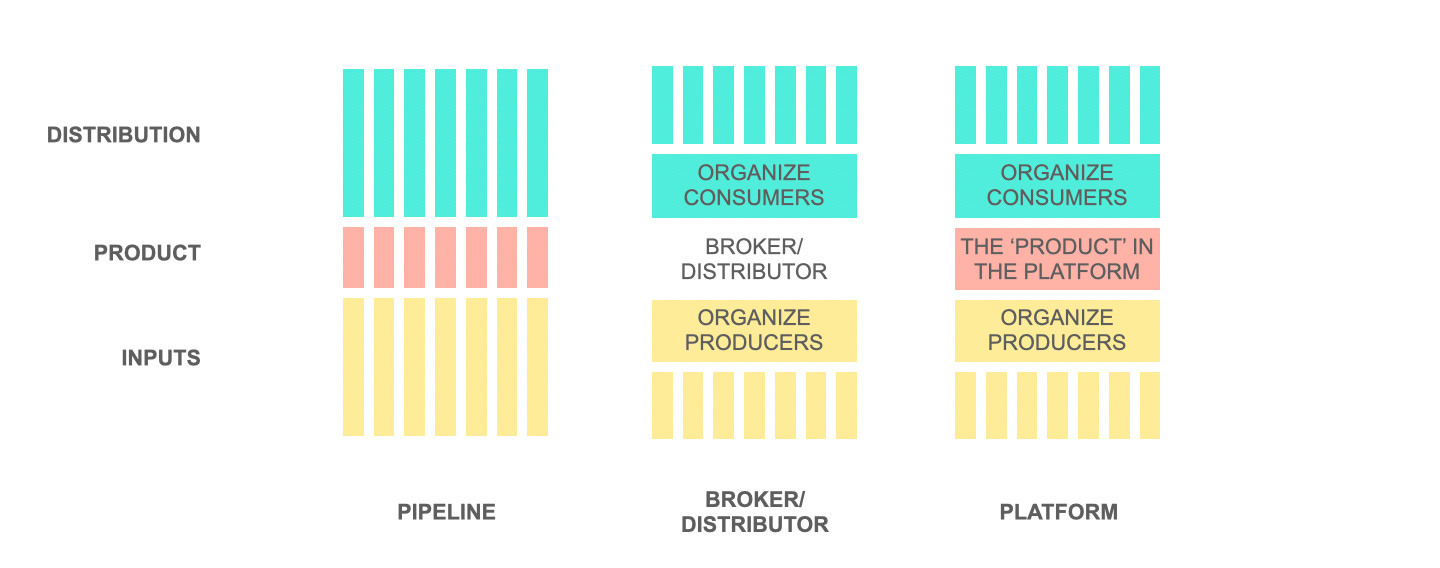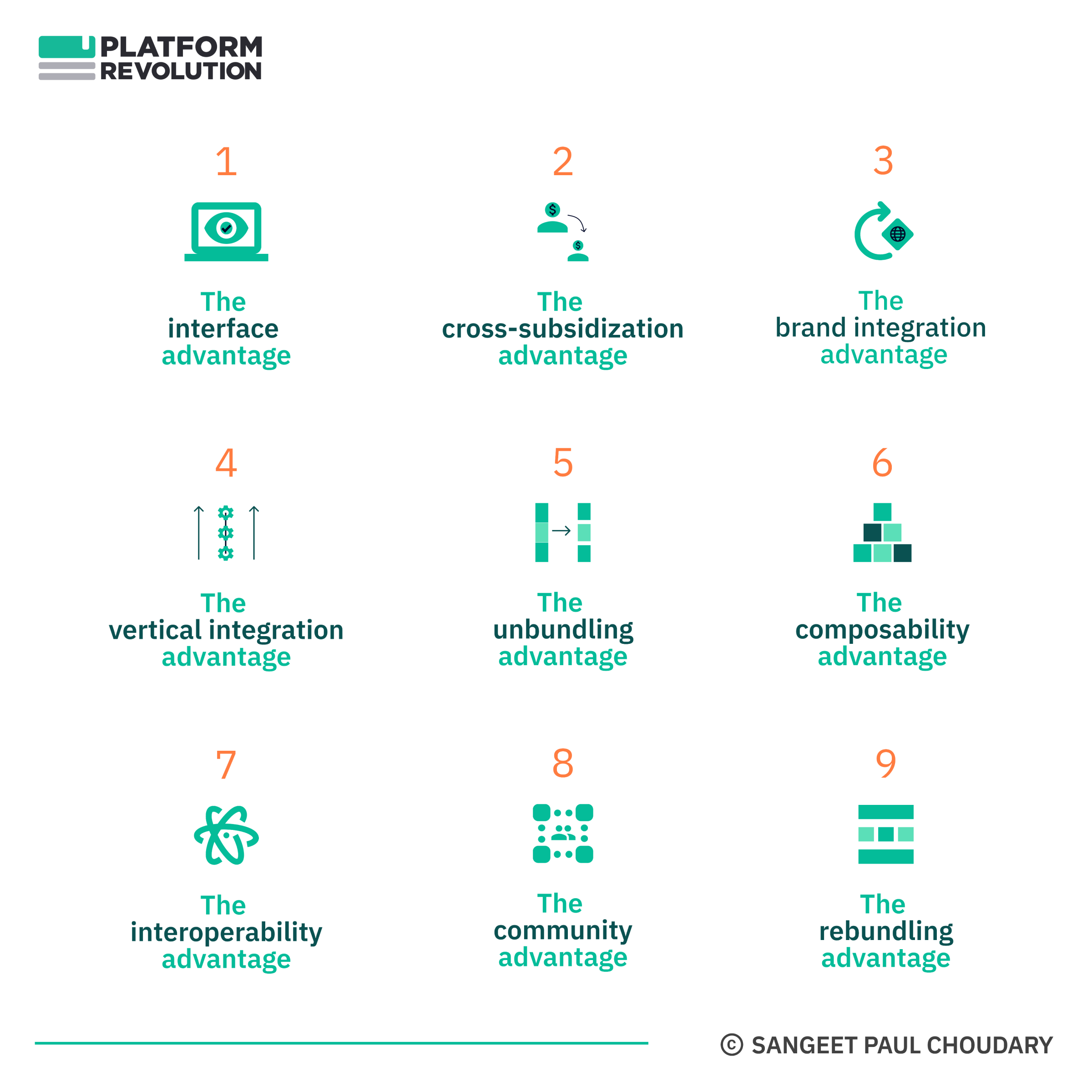Strategy
How platforms transform traditional industries
The “age of platforms” is now firmly established. As we described in our 2016 book, Platform Revolution, platforms are no longer restricted to retail or high-tech, but are visible across multiple industries — and the trend is accelerating.
In the book, we highlighted the trend by noting that in 2007, the five major mobile-phone manufacturers — Nokia, Samsung, Motorola, Sony Ericsson, and LG — collectively controlled 90% of the industry’s global profits. That year, Apple’s iPhone was launched and started taking market share. By 2015, the iPhone generated 92% of global mobile-phone profits.
It’s a great story, but the way it progressed seemed almost unique — until now. The iPhone’s rapid domination, and the subsequent free fall of competitors has become a recurring story. Apple exploited the power of platforms to match producers and consumers in high-value exchanges. Their chief assets are information and interactions, which also create platform value and competitive advantage.
Today, so many industries are realizing the importance of moving to platforms that few industries are exempt. For example:
Significant competition is heating up in heavy industry (Siemens, GE, Schnieder, ABB, Legrand, Rockwell Collins, Emerson, Dassault). An emerging ecosystem, likely with players such as IBM Watson and Microsoft Azure, is providing the backbone.
Infrastructural shifts are becoming more common in banking and fintech, with many companies investing in Ethereum and other open-source, blockchain-based technologies. Established companies such as Deutsche Bank are making major efforts to transform traditional business models, while startups such as Quantopian are crowdsourcing trading algorithms and running funds using the best of breed.
The insurance industry is moving toward new value-creation models and leveraging an environment that’s based on wellness instead of monetizing illness. For example, MassMutual has made significant strides in its platform efforts. In addition, insurance companies are increasingly willing to cross-sell competitors’ products to build and maintain customer relationships.
Global logistics will move towards platform business models leading to more dynamic trade and flexible supply chains.
Feel Free to Share
Download
Download Our Insights Pack!
- Get more insights into how companies apply platform strategies
- Get early access to implementation criteria
- Get the latest on macro trends and practical frameworks
Digitization of global trade is creating huge opportunities across global supply chains. These include supplier ecosystems, container shipping, logistics, trading, and ports. Most transportation players also are moving to platform models.
Health care is seeing a fragmented ecosystem landscape emerge as well, with equally fragmented regulation regarding patient-data ownership. The Affordable Care Act had the paradoxical effect of moving the deployment of electronic medical records forward while possibly locking in older technologies. Now this industry will feel increasing pressure to move away from traditional enterprise implementations toward more open platform solutions.
Fast-moving consumer-goods companies, such as Unilever, Procter & Gamble, and GlaxoSmithKline, are looking downstream to establish direct links with consumers through an ecosystem. For example, food producer McCormick has worked to establish a digital layer around its spice product line.
The platform ecosystem of the future will look vastly different than today’s — and the effects will spread. For instance, artificial intelligence (AI) will become increasingly important, not just for major ecosystem owners like Amazon and Google, but also for those that operate within platforms like Microsoft Azure and IBM Watson. Companies across sectors, as diverse as those in oil and gas exploration and retail, will likely have to partner with the dominant AI companies to access their rapidly improving capabilities. As innovations roll out, voice and vision will prove to be important new interfaces among platform participants. Voice is expected to continue playing a key role in the smart home and mobility space; vision may become critical in mobility and for heavy industry transactions.
Certainly, the road of inexorable growth has some speed bumps — namely in the form of regulatory resistance. We are seeing a fragmented regulatory landscape that may create a new geography of platforms based on a country’s openness. For instance, drone experimentation is more widespread in Australia and New Zealand, while autonomous driving is being welcomed most warmly in China. One implication is that the next generation of platforms may not evolve in the United States.
Additionally, new platform governance models — including some forms of data protectionism — are surfacing. Tokens such as bitcoin are being considered as a model for fintech platform transactions. Cooperative ownership is a possible option for platforms with geographically local network effects, and there are still open questions around the regulation of platforms that act like internet utilities, such as Amazon Web Services. We are seeing some of these concerns playing out in the U.S. debate over net neutrality. Roadblocks may slow platform growth but will not stop it. The near-term advances in networks and data are solidifying platform acceptance and their profound impact is reverberating throughout established industries.
TWEETABLE TAKEAWAYS
Global logistics will move towards platform business models leading to more dynamic trade and flexible supply chains. Share this
Industries like Insurance will move to new value creation models with the rise of platform ecosystems. Share this
Patient-centric ecosystems will transform healthcare but need to overcome current industry fragmentation. Share this
AI will play a big role in the transformation of B2B, giving greater power to the owners of AI. Share this
New governance models may bring about the next generation of platforms with cooperative ownership and blockchain-based regulation. Share this
Note: This article was co-authored with Marshall Van Alstyne and Geoffrey Parker and first appeared in the Sloan Management Review
State of the Platform Revolution
The State of the Platform Revolution report covers the key themes in the platform economy in the aftermath of the Covid-19 pandemic.
This annual report, based on Sangeet’s international best-selling book Platform Revolution, highlights the key themes shaping the future of value creation and power structures in the platform economy.
Themes covered in this report have been presented at multiple Fortune 500 board meetings, C-level conclaves, international summits, and policy roundtables.
Subscribe to Our Newsletter













